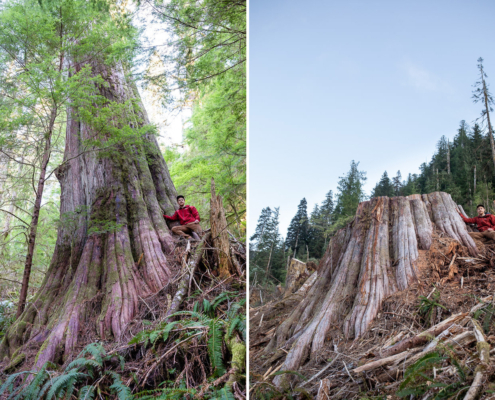
Conservationists demand fast action from B.C.’s new forestry minister on protection for old-growth trees
CBC News British ColumbiaNovember 29, 2020
Katrine Conroy, MLA for Kootenay-West, was appointed this week as B.C.'s forestry minister
Ancient Forest Alliance campaigner and photographer TJ Watt…
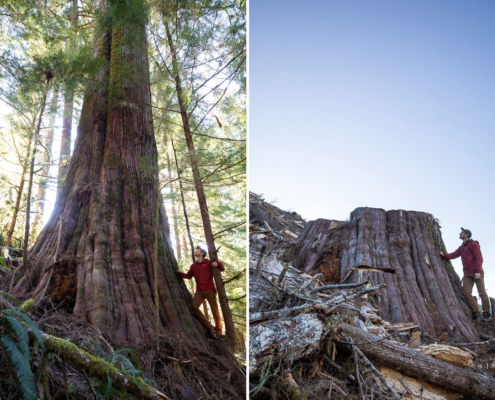
Photo Gallery: Before & After Logging – Caycuse Watershed
Shocking before and after images of giant ancient cedars felled in the Caycuse watershed in Ditidaht territory by Teal Jones between April and November 2020.
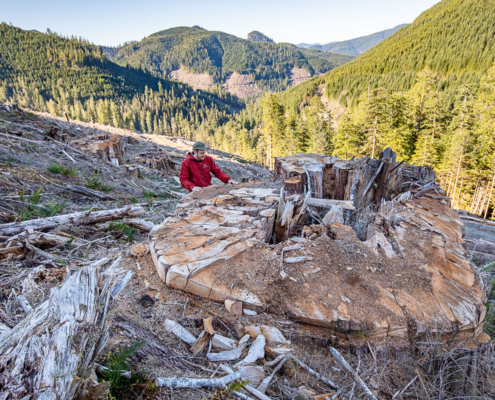
Logging of massive, ancient cedars in Caycuse watershed signals urgent need for provincial action and funding for old-growth
Shocking before-and-after photos reveal destruction of irreplaceable ancient redcedars in Vancouver Island’s Caycuse watershed and highlight urgent need for immediate protection of at-risk old-growth and funding to support First Nations’ protected areas and economies.
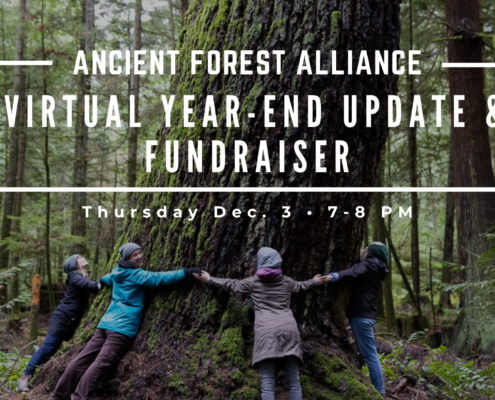
You’re invited to the AFA’s 2020 Year-End Update & Fundraiser!
We’re hosting our annual year-end event and fundraiser on Thursday, December 3rd, from 7-8 pm - this time on Zoom! Join us to learn what we've been up to this past year and what's next for BC's old-growth forests. Plus, you could win some fun prizes!
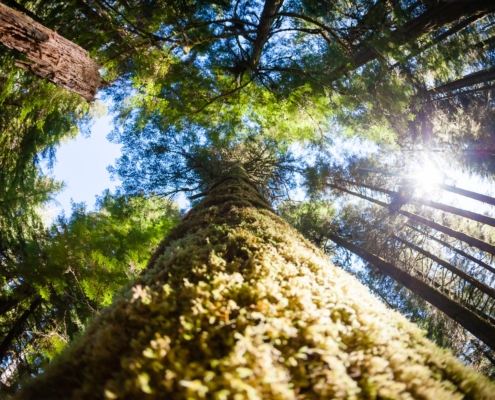
Thank you to our generous business supporters!
We greatly appreciate when the local business community supports the campaign to protect BC's endangered old-growth forests. Click to learn who is helping out.
